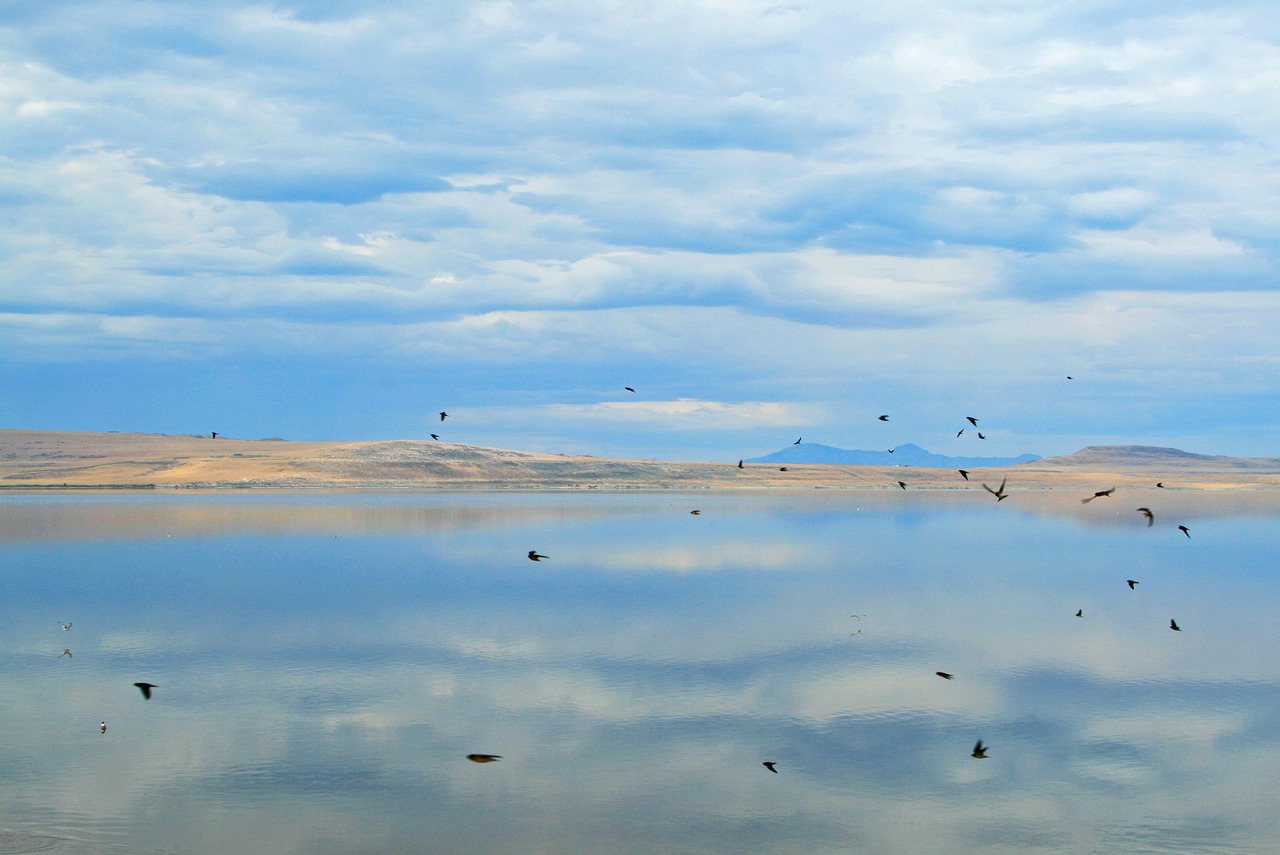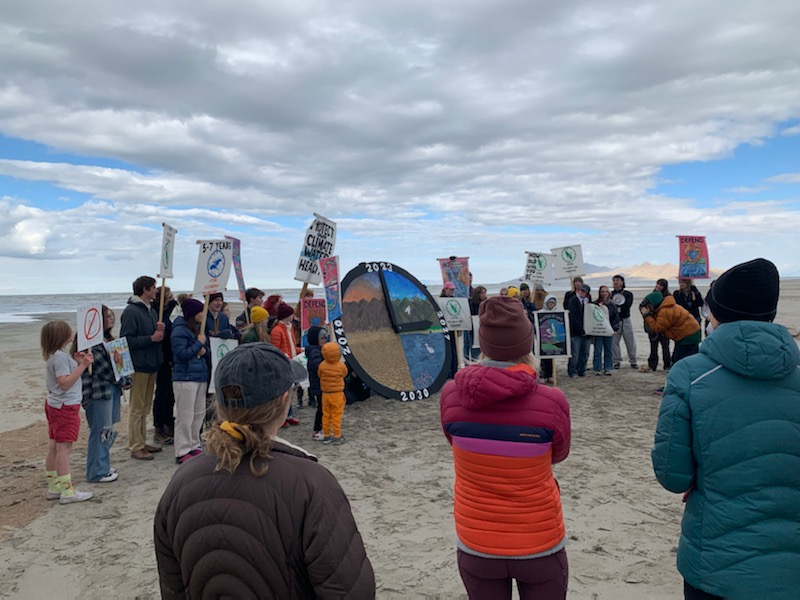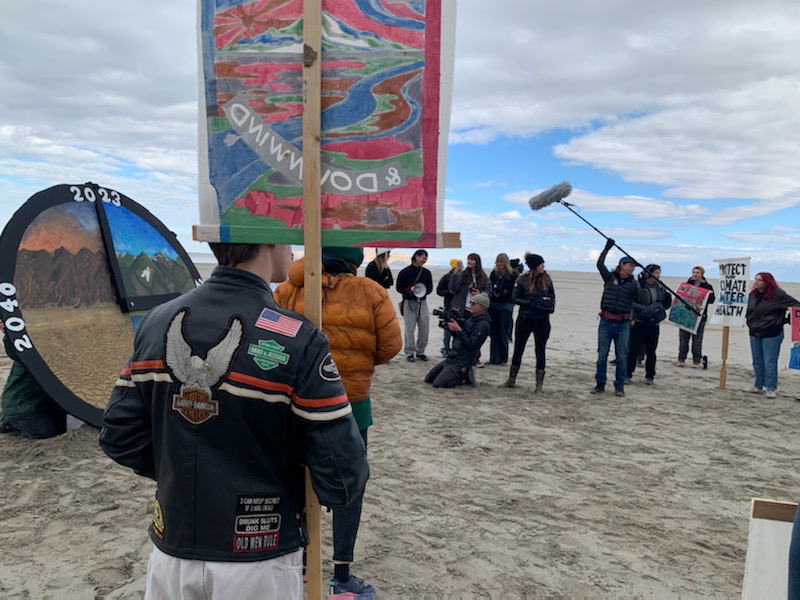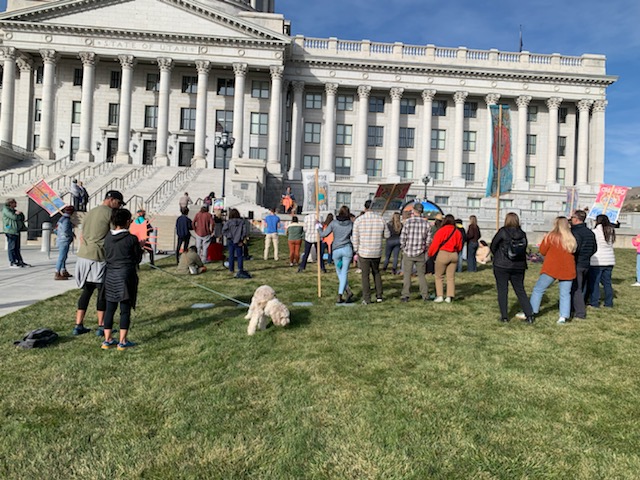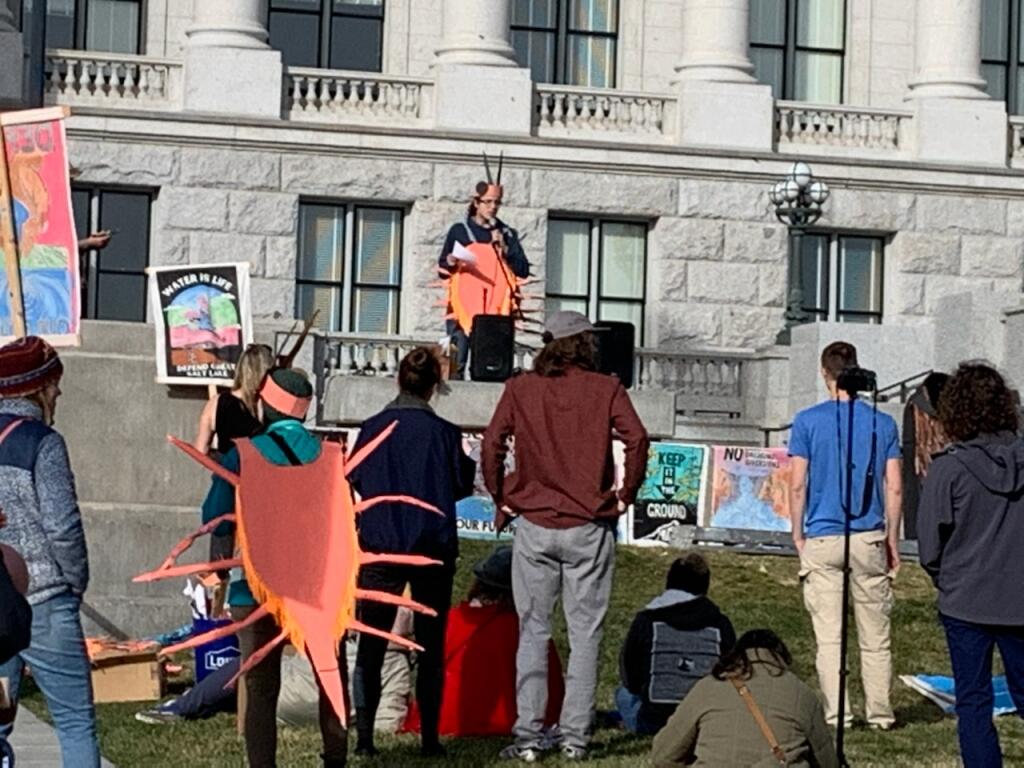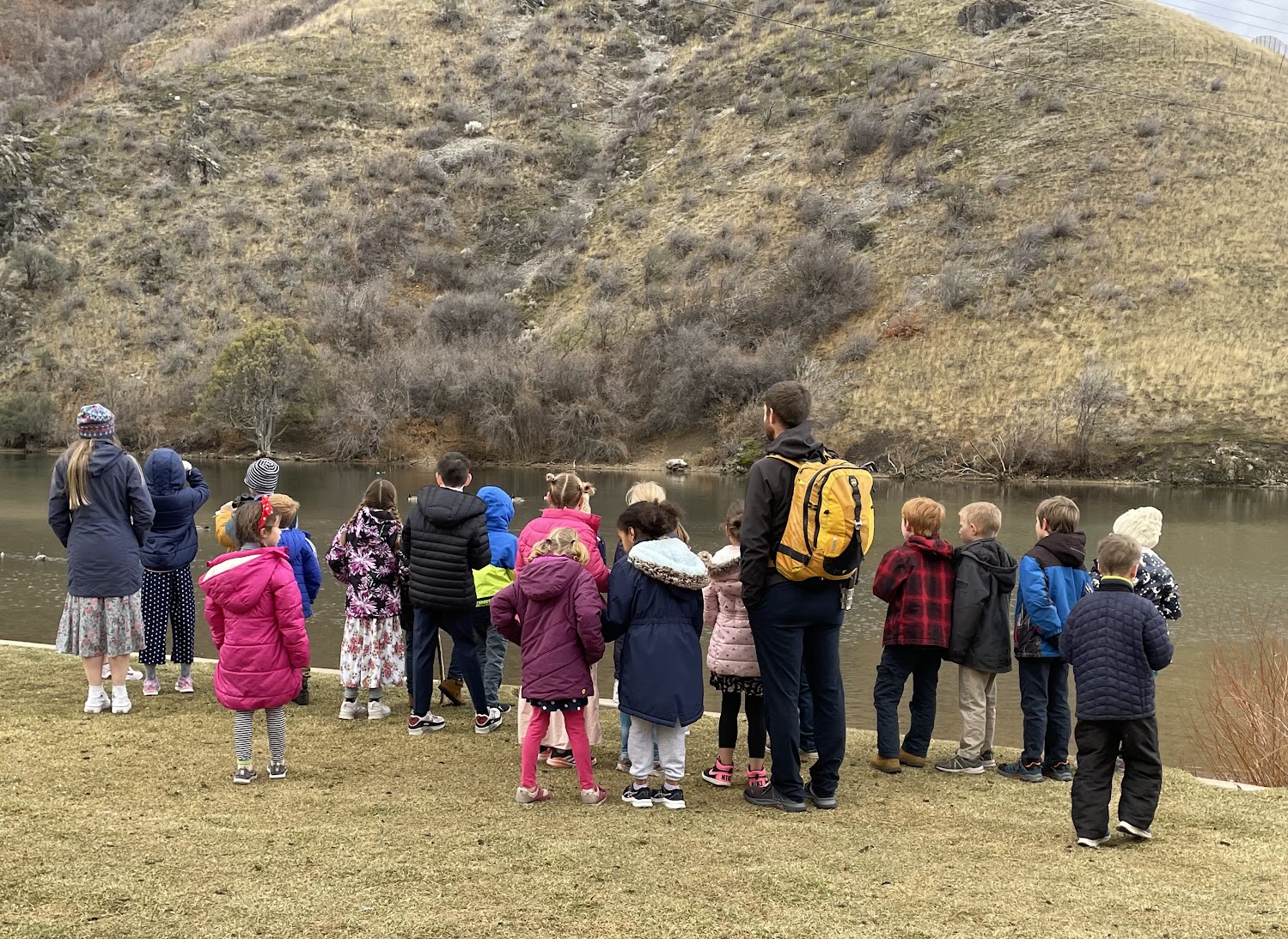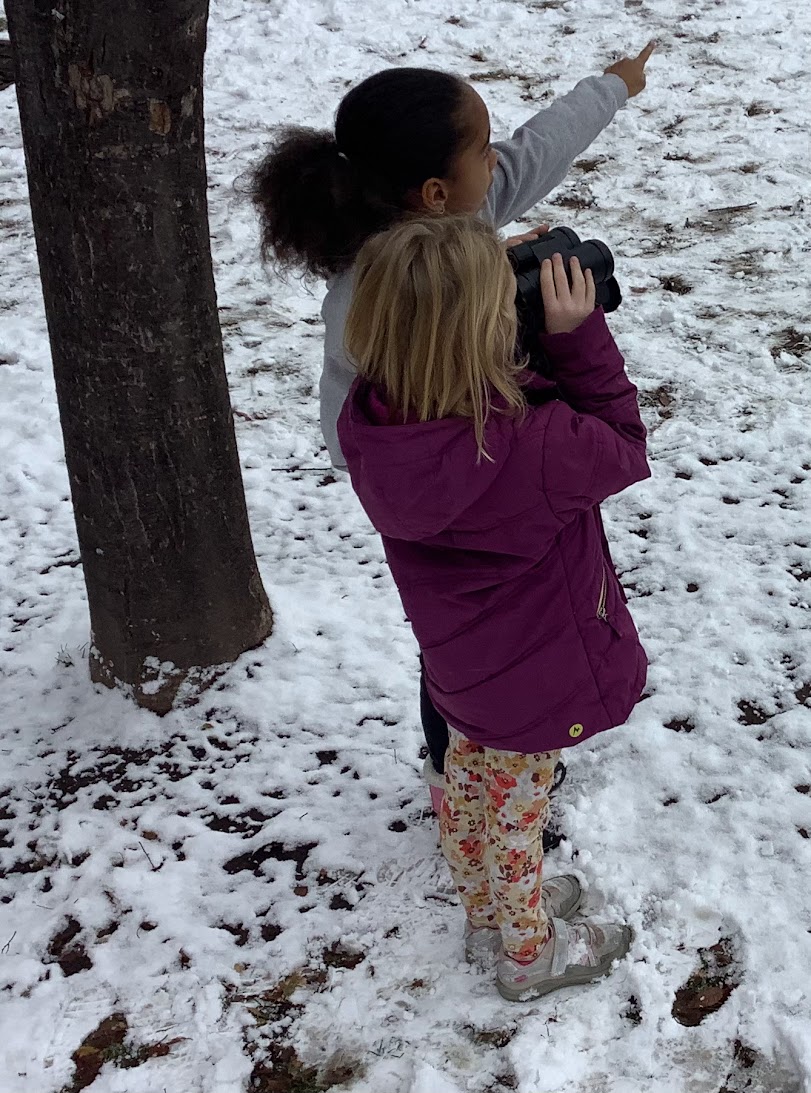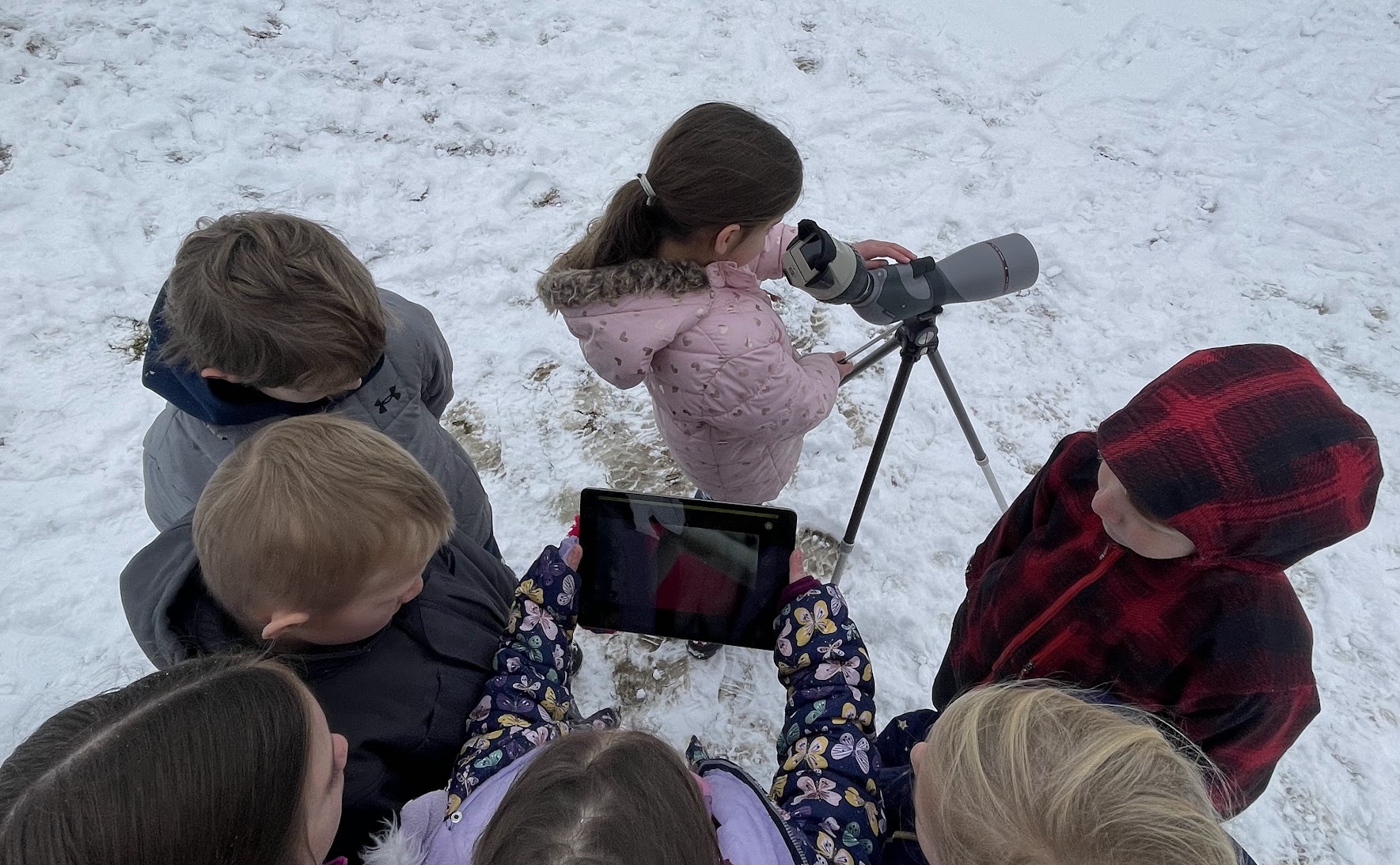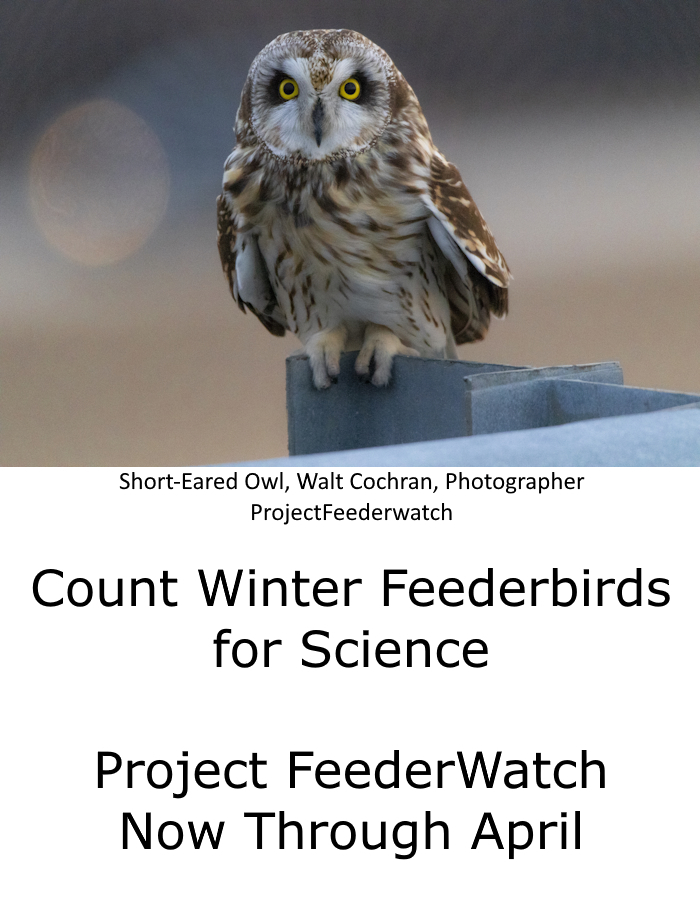
Courtesy & Copyright Mary Heers, Photographer
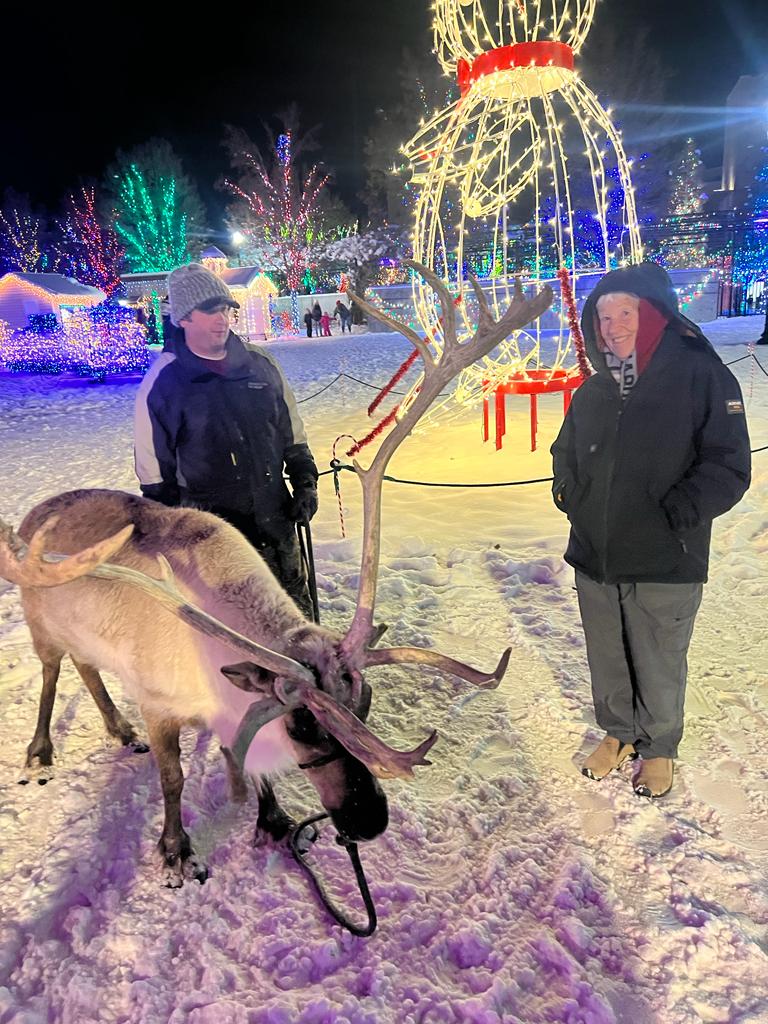 Mary with Bluebell the Reindeer
Mary with Bluebell the Reindeer
from the
Rockin Reindeer Ranch
Ogden City Christmas Square
Copyright Mary HeersI first time I came face to face with a living, breathing reindeer was a few weeks ago at the Reindeer Express hosted by Utah State University vet students. Two vets from the Mt. West Animal Hospital near Provo had brought two of their reindeer with them to Cache Valley and were standing by to answer our questions.
The first thing I learned was that both male and female reindeer grow a new set of antlers every year. The antlers are solid bone and can weigh up to 15 pounds. The males usually drop their antlers in Nov after the mating season, while the females keep theirs a few months longer – until after they drop their calves in the Spring. A vet student chimed in. He said reindeer losing their antlers looks a lot like us losing a baby tooth. The antlers get a little wobbly and simply fall off. The reindeer just keeps grazing.
Now I was hot on the trail of reindeer in Utah. I went to the Ogden City Christmas Square to meet Bluebell from the Rockin Reindeer farm near Ogden. As admirers were taking pictures, Bluebell’s owner told me that watching the antlers regrow could be pretty exciting. Every morning you could get up and easily see how the antlers had grown another inch overnight.
I also learned if you listened closely, you could hear a clicking when the reindeer walked. The first time they heard it, they thought something was terribly wrong. But all reindeer click when the tendon in their leg slides over a bone. Clicking seems to be a way for the herd to find each other in white-out winter weather.
Another adaptation to intense cold is the hair that covers every reindeer’s nose This helps keep it warm in the reindeers natural habitat in the far north.
I can trace my own fascination with reindeer to my childhood days when my father arranged for a friend of his to dress up as Santa and personally deliver a big white sack full of presents to our house. The fact that Santa rang our doorbell didn’t strike me as odd since we didn’t have a chimney. One Christmas Eve I was talking all day about how I would soon get to meet Santa’s reindeer. When the doorbell rang, I rushed to open the door. There was Santa with his big white sack. No reindeer.
“Where are the reindeer?” I asked.
“I left them down the street,” Santa said. “Let’s go see them after we open the presents. “
That did the trick. I forgot all about the reindeer.
But now that I’m older and wiser, I know that most male reindeer drop their antlers in Nov, while the females keep theirs a few more months. So the odds are very, very good that the Santa that rang my doorbell was driving an all-female dream team.
This is Mary Heers and I’m Wild About Utah
Credits:
Photos: Courtesy Mary Heers,
Featured Audio: Courtesy & Copyright © Friend Weller, Utah Public Radio upr.org
Text: Mary Heers, https://cca.usu.edu/files/awards/art-and-mary-heers-citation.pdf
Additional Reading: Lyle Bingham, https://bridgerlandaudubon.org/
Additional Reading
Wild About Utah, Mary Heers’ Wild About Utah Postings
Heaps, Spenser, (The Daily Herald), Springville veterinarian and his reindeer find success, Salt Lake Tribune, June 6, 2015 https://archive.sltrib.com/article.php?id=2596124&itype=CMSID
Bott, Isaac, DocBott – Musings of a mixed animal veterinarian, https://docbott.org/
Rockin Reindeer Ranch, https://www.rockinreindeerranch.com/

